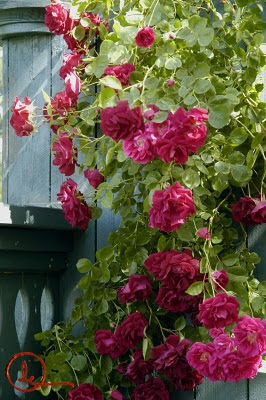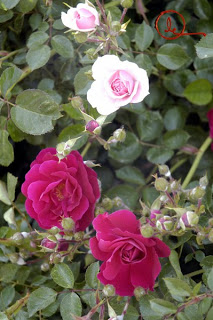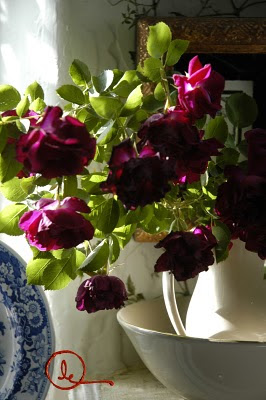Paging Dr. Huey
By Al R. Young
 We've all seen it--and it may have been in our own gardens--that long row of perfect, apricot-hued shrub roses lining a fence, except one of them is a very discordant red. Or maybe it's a pampered group of tea roses in the midst of a cutting garden, except instead of harboring future long-stemmed bouquets, one of the group is actually a fountaining, red social climber grabbing for space.
We've all seen it--and it may have been in our own gardens--that long row of perfect, apricot-hued shrub roses lining a fence, except one of them is a very discordant red. Or maybe it's a pampered group of tea roses in the midst of a cutting garden, except instead of harboring future long-stemmed bouquets, one of the group is actually a fountaining, red social climber grabbing for space.
The interloper didn't crash the party, and he wasn't mislabeled at the nursery--he worked his way up from the very bottom, and now he's definitely on top. He's a wichuriana red rambling rose; his name is Dr. Huey, and like the old-fashioned doc he is, he's always on call.

Tough in just about every way a rose can be--tolerating poor soils and good ones, shade and sun, cold climates and warm ones--Dr. Huey is the most commonly used rootstock in the grafting world of nursery roses; and therefore, inadvertently, the most frequently planted rose in the U.S.
When he's not wreaking havoc on a color scheme or pushing tender teas out of his path, he's actually a rather charming fellow--though his blossoming time is rather brief for those spoiled with ever-blooming modern roses.
He's making a call on our garden now--vying for attention amidst prim pink bonicas. We've got his number, however, and simply cut deep, then whisk his prodigious blooms into tall, fat pitchers throughout the house. Since he never makes a second visit, the bonicas soon have the entire hedge to themselves, where they bloom rather constantly until a hard frost.

Tags: 2010, Beauty and home, Flowers and garden
Browse articles by year: 2026 . 2025 . 2024 . 2023 . 2022 . 2021 . 2020 . 2019 . 2018 . 2017 . 2016 . 2015 . 2014 . 2013 . 2012 . 2011 . 2010 . 2009 . 2008 . 2007 . 2006 . 2005 . 2004 . 2003 . 2002 . 2001 . 2000 . 1999 . 1998 . 1997 . 1996
Browse articles by topic: Art lessons . BenHaven Archives . Blank art diaries . Fine art photography . Framing . Illustration . Inspiration and creativity . Isles of Rune . Limited Editions Collection . My Fathers Captivity . News . Novellas . Oil paintings and prints . Operations announcements . Orders and shipping . Overview . Portfolios . The Papers of Seymore Wainscott . Project commentaries . Recipes by Nancy Young . Recommended reading . Recommended viewing . Temple artworks . The Storybook Home Journal . Tips and techniques . Tools supplies and operations
Browse articles by topic: Art lessons . BenHaven Archives . Blank art diaries . Fine art photography . Framing . Illustration . Inspiration and creativity . Isles of Rune . Limited Editions Collection . My Fathers Captivity . News . Novellas . Oil paintings and prints . Operations announcements . Orders and shipping . Overview . Portfolios . The Papers of Seymore Wainscott . Project commentaries . Recipes by Nancy Young . Recommended reading . Recommended viewing . Temple artworks . The Storybook Home Journal . Tips and techniques . Tools supplies and operations